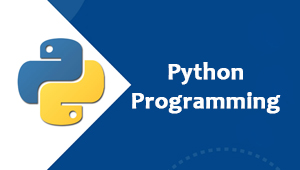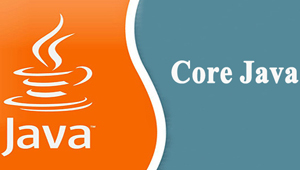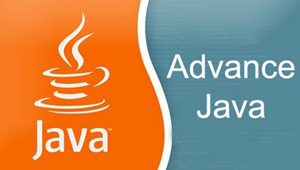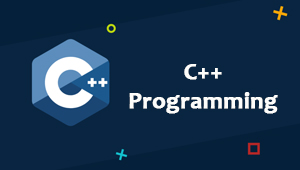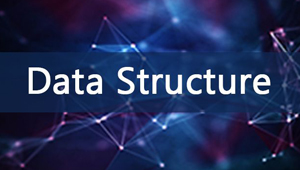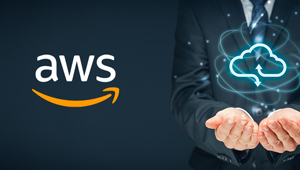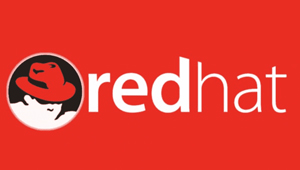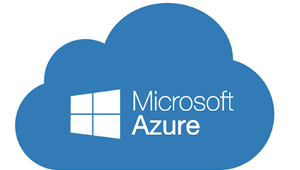Programming Languages Certification Course
Coding Bytes provides 6 months Certificate Course in Programming Languages based on current industry standards that helps attendees to secure placements in their dream jobs in Industry.
Learn Java, Python, Mysql in this course.
- Course Fees: Rs. 45000/-
- Course Duration: 6 months
- 100% Placement Assistance
- 24*7 Expert Support
- Online & Offline Mode
- Affordable Fees
- Easy EMI
- Live Projects Experience
Request a Call Back!
Certificate Course in Programming Languages
Course Highlights
- Java
- OOPS Concept
- Classes
- Swings
- JDBC
- Python
- Python Networking
- Mysql
- PDBC
- RDBMS
- Advance SQL
Programming Languages Certificate Course Details
1) Introduction
- Why Java
- Paradigms
- Diff B/W Java & Other (C,C++)
- Java History
- Java Features
- Java programming format
- Java Statements
- Java Data Types
2) OOPS (Object Oriented Programming & Systems)
- Introduction
- Object
- Constructors
- This Key Word
- Inheritance
- Super Key Word
- Polymorphism (Over Loading & Over Riding)
- Abstraction
- Interface
- Encapsulation
- Introduction to all predefined packages
- User Defined Packages
- Access Specifiers
Blank
3) STRING Manipulation
- String
- String Buffer
4) Arrays
- What is Array
- Single Dimensional Array
- Multi Dimensional Array
- Sorting of Arrays
5) Packages
6) Exception Handling
- Introduction
- Pre Defined Exceptions
- Try-Catch-Finally
- Throws, throw
- User Defined Exception examples
7) I/O Streams
- Introduction
- Byte-oriented streams
- Character – oriented streams
- File
8) Wrapper Classes
- Introduction
- Byte, Short, Integer, Long, Float, Double, Character
- Boolean classes
9) Inner Classes
- Introduction
- Member Inner Class
- Static Inner Class
- Local Inner Class
- Anonymous Inner Class
10) Collection Frame Work
- Introduction
- Util Package interfaces, List, Set, Map
- List Interface 7 Its Classes
- Set Interface & Its Classes
- Map Interface & Is Classes
11) AWT
- Introduction
- Components
- Event-Delegation-Model
- Listeners
- Layouts
- Individual Components Lable, Button, Check Box, Radio Button,
- Choice, List, Menu, Text Field, Text Area
12) SWING (JFC)
- Introduction Diff B/W AWT and SWING
- Components hierarchy
- Panes
- Individual Swings components J Label
- JButton, JTextField, JTextAres
13) SQL
- Basics of SQL queries
- SQL Joins
14) JDBC
- Introduction
- JDBC Architecture
- Types of Drivers
- Statement
- Result Set
- Read Only Result Set
- Updatable Result Set
- Forward Only Result Set
- Scrollable Result Set
- Prepared Statement
15) Introduction to Languages
- What is Language?
- Types of languages
- Introduction to Translators
- Compiler
- Interpreter
- What is Scripting Language?
- Types of Script
- Programming Languages v/s Scripting Languages
- Difference between Scripting and Programming languages
- What is programming paradigm?
- Procedural programming paradigm
- Object Oriented Programming paradigm
16) Introduction to Python
- What is Python?
- WHY PYTHON?
- History
- Features – Dynamic, Interpreted, Object oriented, Embeddable, Extensible, Large standard libraries, Free and Open source
- Why Python is General Language?
- Limitations of Python
- What is PSF?
- Python implementations
- Python applications
- Python versions
- PYTHON IN REALTIME INDUSTRY
- Difference between Python 2.x and 3.x
- Difference between Python 3.7 and 3.8
- Software Development Architectures
17) Python
- Python Distributions
- Download &Python Installation Process in Windows, Unix, Linux and Mac
- Online Python IDLE
- Python Real-time IDEs like Spyder, Jupyter Note Book, PyCharm, Rodeo, Visual Studio Code, ATOM, PyDevetc
18) Python Language Fundamentals
- Python Implementation Alternatives/Flavors
- Keywords
- Identifiers
- Constants / Literals
- Data types
- Python VS JAVA
- Python Syntax
19) Different Modes of Python
- Interactive Mode
- Scripting Mode
- Programming Elements
- Structure of Python program
- First Python Application
- Comments in Python
- Python file extensions
- Setting Path in Windows
- Edit and Run python program without IDE
- Edit and Run python program using IDEs
- INSIDE PYTHON
- Programmers View of Interpreter
- Inside INTERPRETER
- What is Byte Code in PYTHON?
- Python Debugger
20) Python Variables
- bytes Data Type
- byte array
- String Formatting in Python
- Math, Random, Secrets Modules
- Introduction
- Initialization of variables
- Local variables
- Global variables
- ‘global’ keyword
- Input and Output operations
- Data conversion functions – int(), float(), complex(), str(), chr(), ord()
21) Operators
- Arithmetic Operators
- Comparison Operators
- Python Assignment Operators
- Logical Operators
- Bitwise Operators
- Shift operators
- Membership Operators
- Identity Operators
- Ternary Operator
- Operator precedence
- Difference between “is” vs “==”
22) Input & Output Operators
- Input
- Command-line arguments
23) Control Statements
- Conditional control statements
- If
- If-else
- If-elif-else
- Nested-if
- Loop control statements
- for
- while
- Nested loops
- Branching statements
- Break
- Continue
- Pass
- Return
- Case studies
24) Data Structures or Collections
- Introduction
- Importance of Data structures
- Applications of Data structures
- Types of Collections
- Sequence
- Strings, List, Tuple, range
- Non sequence
- Set, Frozen set, Dictionary
- Strings
- What is string
- Representation of Strings
- Processing elements using indexing
- Processing elements using Iterators
- Manipulation of String using Indexing and Slicing
- String operators
- Methods of String object
- String Formatting
- String functions
- String Immutability
- Case studies
25) List Collection
- What is List
- Need of List collection
- Different ways of creating List
- List comprehension
- List indices
- Processing elements of List through Indexing and Slicing
- List object methods
- List is Mutable
- Mutable and Immutable elements of List
- Nested Lists
- List_of_lists
- Hardcopy, shallowCopy and DeepCopy
- zip() in Python
- How to unzip?
- Python Arrays:
- Case studies
26) Tuple Collection
- What is tuple?
- Different ways of creating Tuple
- Method of Tuple object
- Tuple is Immutable
- Mutable and Immutable elements of Tuple
- Process tuple through Indexing and Slicing
- List v/s Tuple
- Case studies
27) Set Collection
- What is set?
- Different ways of creating set
- Difference between list and set
- Iteration Over Sets
- Accessing elements of set
- Python Set Methods
- Python Set Operations
- Union of sets
- functions and methods of set
- Python Frozen set
- Difference between set and frozenset ?
- Case study
28) Dictionary Collection
- What is dictionary?
- Difference between list, set and dictionary
- How to create a dictionary?
- PYTHON HASHING?
- Accessing values of dictionary
- Python Dictionary Methods
- Copying dictionary
- Updating Dictionary
- Reading keys from Dictionary
- Reading values from Dictionary
- Reading items from Dictionary
- Delete Keys from the dictionary
- Sorting the Dictionary
- Python Dictionary Functions and methods
- Dictionary comprehension
29) Functions
- What is Function?
- Advantages of functions
- Syntax and Writing function
- Calling or Invoking function
- Classification of Functions
- No arguments and No return values
- With arguments and No return values
- With arguments and With return values
- No arguments and With return values
- Recursion
- Python argument type functions :
- Default argument functions
- Required(Positional) arguments function
- Keyword arguments function
- Variable arguments functions
- ‘pass’ keyword in functions
- Lambda functions/Anonymous functions
- map()
- filter()
- reduce()
- Nested functions
- Non local variables, global variables
- Closures
- Decorators
- Generators
- Iterators
- Monkey patching
30) Python Modules
- Importance of modular programming
- What is module
- Types of Modules – Pre defined, User defined.
- User defined modules creation
- Functions based modules
- Class based modules
- Connecting modules
- Import module
- From … import
- Module alias / Renaming module
- Built In properties of module
31) Packages
- Organizing python project into packages
- Types of packages – pre defined, user defined.
- Package v/s Folder
- py file
- Importing package
- PIP
- Introduction to PIP
- Installing PIP
- Installing Python packages
- Un installing Python packages
32) OOPs
- Procedural v/s Object oriented programming
- Principles of OOP – Encapsulation , Abstraction (Data Hiding)
- Classes and Objects
- How to define class in python
- Types of variables – instance variables, class variables.
- Types of methods – instance methods, class method, static method
- Object initialization
- ‘self’ reference variable
- ‘cls’ reference variable
- Access modifiers – private(__) , protected(_), public
- AT property class
- Property() object
- Creating object properties using setaltr, getaltr functions
- Encapsulation(Data Binding)
- What is polymorphism?
- Overriding
- i) Method overriding
- ii) Constructor overriding
- Overloading
- i) Method Overloading
- ii) Constructor Overloading
iii) Operator Overloading
- Class re-usability
- Composition
- Aggregation
- Inheritance – single , multilevel, multiple, hierarchical and hybrid inheritance and Diamond inheritance
- Constructors in inheritance
- Object class
- super()
- Runtime polymorphism
- Method overriding
- Method resolution order(MRO)
- Method overriding in Multiple inheritance and Hybrid Inheritance
- Duck typing
- Concrete Methods in Abstract Base Classes
- Difference between Abstraction & Encapsulation
- Inner classes
- Introduction
- Writing inner class
- Accessing class level members of inner class
- Accessing object level members of inner class
- Local inner classes
- Complex inner classes
- Case studies
33) Exception Handling & Types of Errors
- What is Exception?
- Why exception handling?
- Syntax error v/s Runtime error
- Exception codes – AttributeError, ValueError, IndexError, TypeError…
- Handling exception – try except block
- Try with multi except
- Handling multiple exceptions with single except block
- Finally block
- Try-except-finally
- Try with finally
- Case study of finally block
- Raise keyword
- Custom exceptions / User defined exceptions
- Need to Custom exceptions
- Case studies
34) Regular Expressions
- Understanding regular expressions
- String v/s Regular expression string
- “re” module functions
- Match()
- Search()
- Split()
- Findall()
- Compile()
- Sub()
- Subn()
- Expressions using operators and symbols
- Simple character matches
- Special characters
- Character classes
- Mobile number extraction
- Mail extraction
- Different Mail ID patterns
- Data extraction
- Password extraction
- URL extraction
- Vehicle number extraction
- Case study
35) File & Directory handling
- Introduction to files
- Opening file
- File modes
- Reading data from file
- Writing data into file
- Appending data into file
- Line count in File
- CSV module
- Creating CSV file
- Reading from CSV file
- Writing into CSV file
- Object serialization – pickle module
- XML parsing
- JSON parsing
36) Python Logging
- Logging Levels
- implement Logging
- Configure Log File in over writing Mode
- Timestamp in the Log Messages
- Python Program Exceptions to the Log File
- Requirement of Our Own Customized Logger
- Features of Customized Logger
37) Date & Time module
- How to use Date & Date Time class
- How to use Time Delta object
- Formatting Date and Time
- Calendar module
- Text calendar
- HTML calendar
38) OS module
- Shell script commands
- Various OS operations in Python
- Python file system shell methods
- Creating files and directories
- Removing files and directories
- Shutdown and Restart system
- Renaming files and directories
- Executing system commands
39) Multi-threading & Multi Processing
- Introduction
- Multi tasking v/s Multi threading
- Threading module
- Creating thread – inheriting Thread class , Using callable object
- Life cycle of thread
- Single threaded application
- Multi threaded application
- Can we call run() directly?
- Need to start() method
- Sleep()
- Join()
- Synchronization – Lock class – acquire(), release() functions
- Case studies
40) Garbage collection
- Introduction
- Importance of Manual garbage collection
- Self reference objects garbage collection
- ‘gc’ module
- Collect() method
- Threshold function
- Case studies
41) Python Data Base Communications(PDBC)
- Introduction to DBMS applications
- File system v/s DBMS
- Communicating with MySQL
- Python – MySQL connector
- connector module
- connect() method
- Oracle Database
- Install cx_Oracle
- Cursor Object methods
- execute() method
- executeMany() method
- fetchone()
- fetchmany()
- fetchall()
- Static queries v/s Dynamic queries
- Transaction management
- Case studies
42) Python – Network Programming
- What is Sockets?
- What is Socket Programming?
- The socket Module
- Server Socket Methods
- Connecting to a server
- A simple server-client program
- Server
- Client
43) Tkinter & Turtle
- Introduction to GUI programming
- Tkinter module
- Tk class
- Components / Widgets
- Label , Entry , Button , Combo, Radio
- Types of Layouts
- Handling events
- Widgets properties
- Case studies
44) Basics of Database
- RDBMS
- Architecture of MySQL
- Database ACID properties
- Installation and Configuring MySQL
- Features of DBMS
45) Database Design
- Database Table and Constraints
- ACID and Transactions
- Deadlocks, Isolation Levels and Logging
- Designing and Normalization
46) Security and Users
- Creating users and granting privileges
- User Backup
- Security practices and changing password
47) Performance
- Performance problems
- Performance monitoring
- Impact of Indexing on Database performance
- Performance Optimization
48) MySql Basics
- Database creation
- Database manipulation – Add, Edit, Retrieve and Delete
- Table creation
- Table manipulation – Add, Edit, Retrieve and Delete
49) Advance SQL
- Building and Updating VIEWs
- SQL Select Statements
- Using Joins to combine Related Table
- Insert, Update and Delete commands
- Sub queries
Get Following Benefits :

Job Oriented Training

Job Assistance

Work on Live Projects

Get Course Certificate
Other Courses
Python Programming
Learn Advanced Python Coding
Duration: 3 months.
⭐⭐⭐⭐⭐ 4.9 (1268 ratings)
Fees: ₹14999

